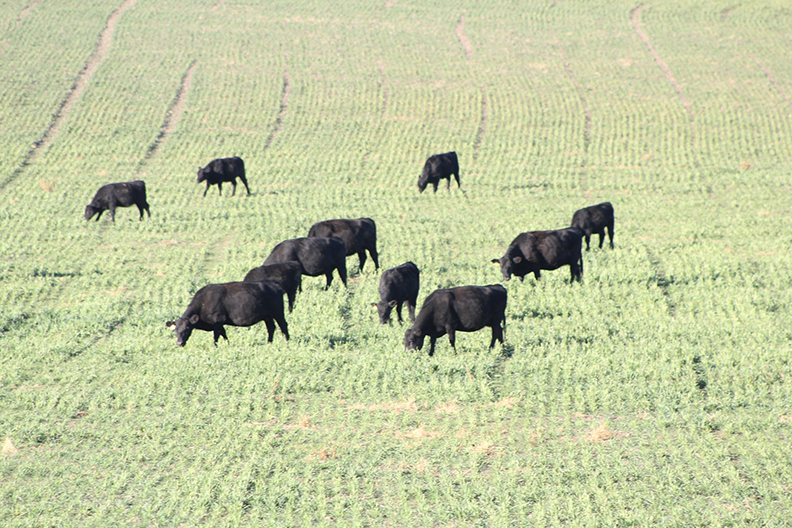![]()

By Aaron Berger, Nebraska Extension Beef Educator
Current cattle market conditions, along with the price and short availability of hay, have created a scenario where the growing winter wheat crop may have more value for producers for grazing or as a hay crop this spring than to harvest it for grain. The current market value of good quality prairie hay and alfalfa ranges from $180 to $270 per ton. Hay stocks are short. Harvested feed costs at current hay prices range from $3 to $4 per cow-calf pair daily.
For some producers, the option to graze out wheat or harvest it as hay may net more value per acre than harvesting it for grain, especially if grazing would keep them from purchasing additional feed at current market prices. This is particularly true if weather conditions or disease have damaged wheat and will reduce expected grain yields. One acre of wheat in May and early June with adequate moisture could provide one cow-calf pair for 45 days or more of grazing. At $3.50 per day, this is a value of over $150 per acre. Windrowing the wheat at late boot to the early head stage and strip grazing the windrows with cow-calf pairs is an option that will maximize grazing harvest efficiency and minimize harvesting costs. For more on this option, see the article “Windrow Grazing Annual Forages in the Growing Season to Increase Harvest Efficiency and Productivity” at beef.unl.edu.

After the stress of this winter, cow-calf pairs would specifically benefit from this high-quality grazing opportunity, especially if cow body condition needs to improve prior to breeding. Wheat pasture also provides the opportunity to get cow-calf pairs out of dry lots and on to clean ground which can benefit calf health. In western Nebraska, stocker cattle can be expected to gain very well on wheat during May and early June, ranging from 1.5 to 2.5 pounds per head per day. With the current value of gain for stocker cattle, this may be an attractive option.
Pasturing wheat also will help to facilitate the delaying of turnout onto pastures or native ranges, allowing those pastures to establish grass growth prior to the start of grazing. Delaying grazing will be particularly valuable this year as plants were severely stressed after the harsh drought conditions of 2022. Delaying turnout will allow grass to utilize available soil moisture for forage growth. The delayed turnout often results in more total forage growth that can be utilized later in the grazing season. Early growth will be especially beneficial for catching and retaining precipitation that occurs. Fencing, water, and a sacrifice area to get cattle onto should wet conditions happen during grazing are factors that should be considered when evaluating the potential for grazing wheat. To help reduce the risk of grass tetany, especially for lactating cows, a high magnesium mineral supplement should be fed to cattle two to four weeks before turn out and during grazing. For more information on when to start grazing and management practices to effectively utilize this forage see the article “Getting the Most Out of Grazing Cereal Rye and Other Winter-hardy Small Cereals” at beef.unl.edu.
If cattle grazing is not feasible, harvesting wheat as hay is another alternative that may net more dollars per acre than harvesting the crop as grain. Wheat harvested as forage often yields over two tons of hay per acre. It is important to consider the livestock you plan to feed the hay to before you pick your harvest date. For young growing cattle, wheat hay should be cut in the boot stage or as soon as possible after heading to ensure good protein and energy content as well as palatability. If mature, dry beef cows are the targeted users for the hay, harvest can be delayed a little longer to increase yield, but doing so will sacrifice nutritive value and palatability. Grazing wheat or harvesting it early in the boot stage for hay could also open a window of opportunity to plant a summer annual forage into the wheat stubble as a second crop if good moisture conditions are present.
A partial budget that analyzes both costs and projected revenues associated with grazing cattle, windrow grazing, cutting for hay, or harvesting wheat for grain can be helpful to producers in evaluating these options. Grazing or haying options should also be evaluated, considering the potential impact that they will have on subsequent crop production, insurance, and potential government payments.
For more information on crop budgeting, visit cap.unl.edu/cropbudgets.
